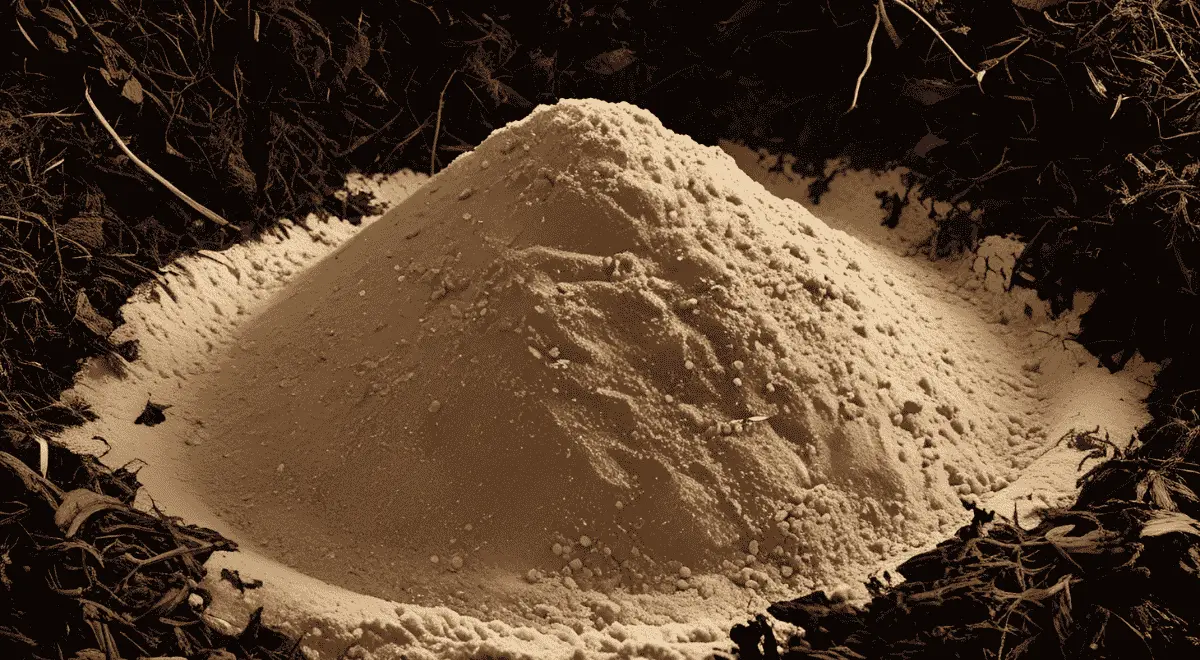Table of Contents
Wondering if you can add sand to compost? You’re not alone. Many gardeners, especially beginners, find themselves with leftover sand from other projects or sandy soil in their yard and wonder whether they can mix it into their compost. In this simple and helpful guide, we’ll answer all your questions about using sand in compost and explain how and why it can be useful. By the end, you’ll understand not just whether sand belongs in compost, but how to use it effectively to improve your garden’s soil and plant health.
Can You Put Sand in Compost?
Yes, you can put sand in compost. While sand isn’t an organic material that breaks down like food scraps or yard waste, it still has benefits when added to compost. Sand acts as a physical conditioner, helping to keep compost from becoming too dense or waterlogged. A light sprinkling of clean sand can assist in improving airflow within the compost pile and support the microbial activity needed for decomposition. Use it in small amounts to enhance structure without diluting nutrients.
Why Add Sand to Compost?
Sand is added to compost for improve drainage and reduce compaction.Compost that’s too wet or sticky can compact and become anaerobic, slowing down the composting process and causing bad smells. Adding sand helps loosen the texture of compost, allowing water to drain and air to circulate. This improved environment supports healthy microbes that break down organic matter faster. It’s especially useful in wetter climates or when compost contains lots of green, wet material like food scraps and grass clippings.
What Happens If You Mix Sand With Compost?
The mix becomes well-draining and easy to work with when sand is combined with compost, the resulting blend gains better structure and texture. It becomes lighter, less sticky, and easier to spread in the garden. This kind of soil improvement is great for beds that suffer from poor drainage or overly dense soil. The mix also helps create ideal growing conditions by giving plant roots a breathable environment and reducing the risk of root rot.
How Much Sand Should I Add to My Compost?
Start with 1 part sand to 4 parts compost. A little sand goes a long way. By using one part sand for every four parts compost, you get enough structure improvement without making the compost too gritty or dry. This ratio balances aeration with nutrient retention and helps avoid any negative effects like excessive dryness or reduced fertility.
What Is the Ideal Sand-to-Compost Ratio?
4 parts compost to 1 part sand.This balanced mix supports healthy plant growth and good compost performance. Compost provides organic nutrients and microbial life, while sand ensures drainage and airflow. Keeping sand to about 20–25% of the mix avoids issues like nutrient dilution and overly dry soil, making this ratio ideal for most garden applications.
How Much Sand Is Too Much?
Anything over 30% is usually too much.Adding too much sand can negatively affect compost quality. It can make the mix overly dry, reduce nutrient density, and even compact the soil instead of loosening it. Aim to keep the sand content below one-third of the total mix, especially if your compost will be used for vegetables or nutrient-demanding plants.
How Do I Mix Sand and Compost Properly?
Mix it with a shovel or pitchfork until evenly blended. For best results, sprinkle the sand gradually and mix as you go. Don’t dump it all in one spot or layer it too thickly, as this can create compacted clumps. Use tools like a pitchfork or garden fork to blend everything thoroughly. This ensures even distribution and maintains a fluffy texture for optimal compost performance.
Can I Layer Sand and Compost?
Yes you can, in thin layers only. Layering sand with compost is a technique you can use during composting or soil prep. However, thick layers of sand can block air and water movement. To avoid that, apply a light dusting of sand between compost layers. This will support airflow and drainage without disrupting the composting process.
Which Sand Is Best for Compost?
Sharp sand or horticultural sand is best for compost.These types of sand have a coarse texture that helps with drainage and airflow. Avoid fine sand like beach sand, which can hold salt and compact easily. Builders’ sand can sometimes contain chemicals or silt, so it’s important to check the label. Horticultural or sharp sand is clean, coarse, and safe for use in compost.
What Is Compost Sand?
Compost sand means Sand mixed with compost. The term “compost sand” isn’t a technical product, but it refers to a custom blend gardeners create by mixing sand and compost. This mixture is commonly used in raised beds or to improve heavy soils. It combines the best of both worlds: nutrients from compost and drainage from sand.
Does Sand Help Compost Drain Better?
Yes, Sand Helps Compost Drain Better. When your compost retains too much water, decomposition slows and odors can develop. Sand helps create channels that allow excess moisture to escape. This improves the compost’s internal structure and prevents waterlogging, which is especially helpful during rainy seasons or when composting moist materials.
Can Sand Help with Compost Aeration?
Yes, Proper airflow is key to healthy compost. Without it, the pile can turn anaerobic and stop breaking down efficiently. Sand helps keep materials separated, preventing them from sticking together too tightly. This promotes a more even, oxygen-rich environment for microbes to thrive and break down waste faster.
Should I Add Sand for Clay Soil?
Definitely you should add sand for clay soil. Clay soil is dense and retains water, which can suffocate plant roots. When you add compost mixed with sand, it helps break up the clay, improves structure, and increases drainage. This makes the soil easier to work with and gives your plants a much healthier environment to grow.
Will Adding Sand Make Compost Too Dry?
Adding sand make compost too dry only if you use too much. Sand doesn’t hold moisture well, so using it excessively can dry out your compost pile. That’s why sticking to the proper ratio is important. Keep an eye on your compost’s moisture if it feels like a wrung-out sponge, it’s just right. If it’s too dry, add some water or wet greens.
Does Sand Cause Nutrient Loss?
Not directly. Sand doesn’t absorb or release nutrients, which means it won’t feed your plants or take anything away. However, adding too much can dilute your compost and lower its nutrient value. As long as you add it in moderation, your compost will stay nutrient-rich and beneficial.
Does Sand Slow Composting?
Not really. Sand is neutral in the composting process—it doesn’t break down or contribute biologically, but it doesn’t hinder microbes either. Its main job is to improve structure. As long as you maintain a good balance of green and brown materials, the composting process will continue at a healthy pace.
Can Sand Attract Pests in Compost?
No sand doesn’t attract pets in compost.Sand has no smell and no nutritional value, so it doesn’t attract pests. Unwanted animals and insects usually show up due to improperly managed compost like exposed food scraps or meat waste not from sand. Keeping your pile well-balanced and covered is the best defense.
Is Sand-Compost Mix Good for Raised Beds?
Yes Sand-Compost Mix Good for Raised Beds.Raised beds often benefit from soil that drains well and resists compaction. Mixing compost with sand creates a light, fluffy soil that supports healthy root growth and proper moisture levels. It’s a great option if your raised beds have poor natural drainage or heavy clay content.
Can I Use Sand and Compost for Potting Soil?
Yes you can with peat or coir added, Potting soil needs to hold moisture, provide nutrients, and allow for drainage. A good mix includes compost for nutrients, sand for drainage, and something like peat moss or coconut coir to retain water. This combination supports plant health in containers and prevents issues like root rot.
Does It Help Vegetable Gardens?
Yes, especially in heavy soils, Vegetables like carrots, potatoes, and beets need loose, well-draining soil to grow properly. A compost-sand mix prevents compaction, allowing roots to grow deeper and straighter. Even leafy greens and tomatoes benefit from the improved structure and air flow this mixture provides.
Alternatives to Sand in Compost?
There are several good alternatives to Sand in Compost like Perlite, vermiculite, coco coir,If you prefer something lighter than sand. Perlite and vermiculite are both mineral-based and help with aeration and drainage. Coco coir is a natural product made from coconut husks that retains water while improving texture. These materials are ideal for indoor composting or container gardening.
How Does Sand Affect Compost in Containers?
Helps with drainage but can make the mix heavy,In containers, weight matters. Sand adds drainage but also bulk, which might not be ideal for small pots or balconies. Use sand in moderation and balance it with light materials like peat, perlite, or coir to keep the mix easy to handle and supportive of plant roots.
Is Sand in Compost Worth It?
Yes, when used correctly. Adding sand to compost improves drainage, prevents compaction, and helps maintain aeration. Just use the right type (sharp or horticultural sand), avoid overuse, and pair it with plenty of organic matter. Whether you’re improving your clay soil, prepping raised beds, or building better potting soil, sand in compost can be a simple and powerful tool in your gardening toolkit.


